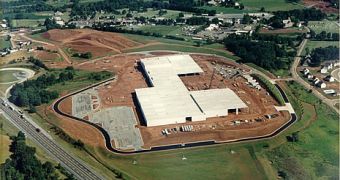The Bloomfield, Connecticut-based Pepperidge bakery now relies on its recently-built fuel cell power plants for 70% of its electrical energy requirements. The excess heat generated in the process is also used for baking purposes, reducing the pollution generated by CO2 emissions in the process.
The recent partnership between the Pepperidge Farm Inc., FuelCell Energy Inc. and Connecticut Clean Energy Fund (CCEF) allowed for the building of the United States' biggest commercial fuel cell power plant. This will provide the 260,000 square foot (24,155 square meter or 0.024 square kilometer) Pepperidge bakery in Bloomsfield, Connecticut with an amount of 1.2 MW of electrical power, representing 57% of the total electricity output used by the facility.
The new plant is the second DFC fuel-based one used by Pepperidge, the first one being built 2 years ago. That one provides the bakery another 250 kW of power. Thus, their overall output fulfills 70% of the bakery's energy requirements. While the cell normally yields 47% electrical efficiency, when the heat factor (used in the baking processes) is taken into account, the efficiency percentage goes up to 80.
The president of Pepperidge Farm, Pat Callaghan, stated that, “This initiative reflects the strong commitment to corporate social responsibility and sustainability that is held by both Pepperidge Farm and our parent company Campbell Soup Company.” This statement was also backed up by Richard Shaw, the director of the Business Development department at FuelCell Energy – “We are pleased that Pepperidge Farm relies on DFC fuel cells to achieve its sustainability goals. By using our ultra-clean, highly efficient DFC fuel cells, Pepperidge Farm stands to significantly reduce power costs while lowering emissions and increasing power reliability.”
The fuel cells use electrochemical, combustion-free processes in order to produce electricity, with almost no nitrous or sulfur oxides, or particulate matter emission. This translates into much less carbon dioxide emissions in the atmosphere, compared with regular fossil fuel power plants. Hopes are that other companies will follow the example of those from Pepperidge, and will look into replacing their fossil fuel electrical power sources.

 14 DAY TRIAL //
14 DAY TRIAL //